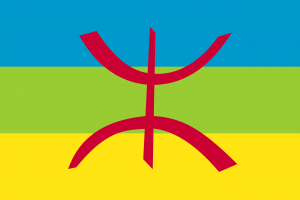Language/Central-atlas-tamazight/Grammar/Questions
Hi Central Atlas Tamazight learners! 😊
In today's lesson, we will be learning how to ask questions in Central Atlas Tamazight. Asking questions is an important part of any language, and Central Atlas Tamazight is no exception. We will look at the different ways to form questions, as well as some tips and tricks to help you ask questions more effectively.
Forming Questions
In Central Atlas Tamazight, there are two main ways to form questions: using interrogative words and using intonation.
Interrogative Words
Interrogative words are words that are used to ask questions. In Central Atlas Tamazight, the most common interrogative words are:
- ma (what)
- nch (who)
- nk (where)
- nkk (when)
- nh (why)
- nhmm (how)
These words can be used to form questions in a variety of ways. For example, if you wanted to ask "What is your name?", you could say "Ma yemma?".
Intonation
Intonation is the rise and fall of your voice when speaking. In Central Atlas Tamazight, you can use intonation to indicate that you are asking a question. To do this, you simply raise your voice at the end of the sentence. For example, if you wanted to ask "Where are you going?", you could say "Nk tt-yett-a?".
Tips and Tricks
Here are some tips and tricks to help you ask questions more effectively:
- Use simple language. Avoid using complex words or phrases that may confuse the listener.
- Speak slowly and clearly. This will help the listener understand what you are saying.
- Listen carefully to the answer. This will help you understand the context of the conversation and ask follow-up questions if necessary.
- Be patient. Don't rush the listener or interrupt them while they are speaking.
- Ask open-ended questions. Open-ended questions allow the listener to provide more detailed answers.
- Use gestures. Gestures can help convey your meaning and make it easier for the listener to understand.
If you have any questions, please ask them in the comments section below.
Feel free to edit this wiki page if you think it can be improved. 😎

